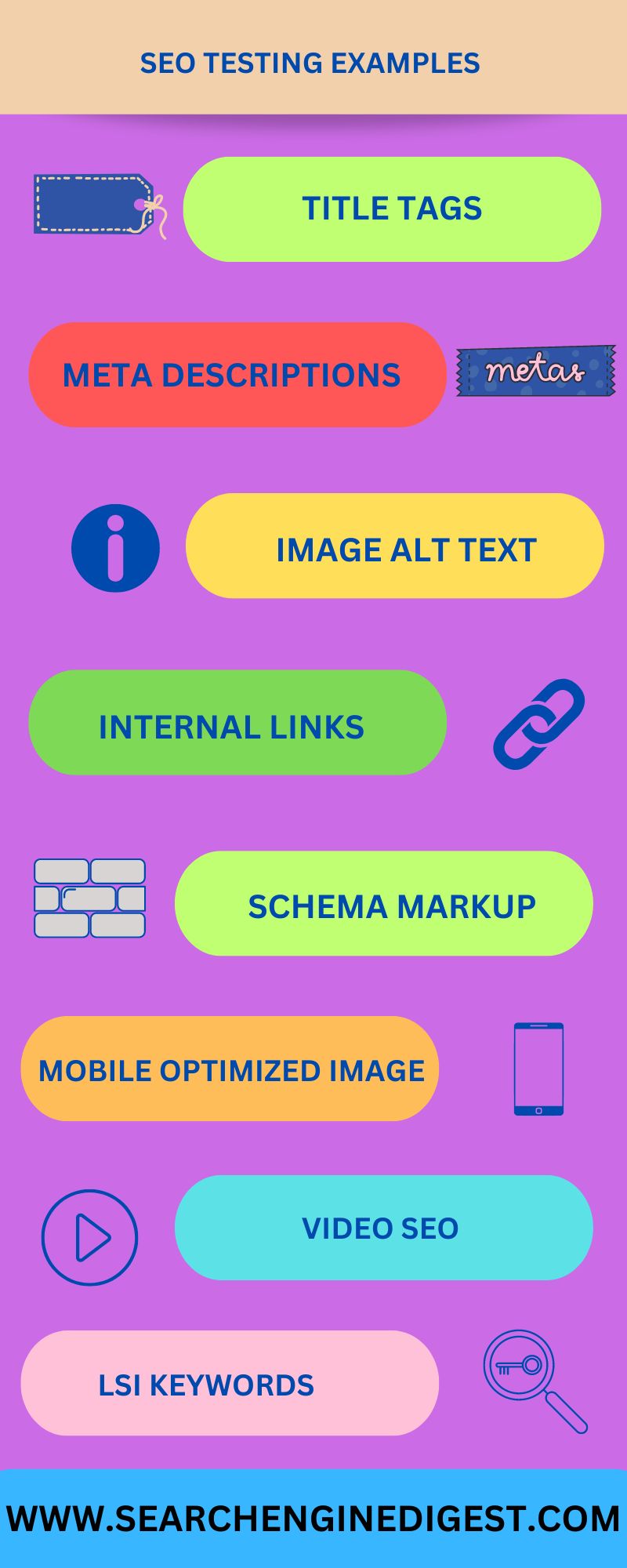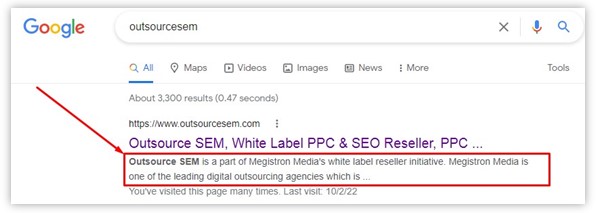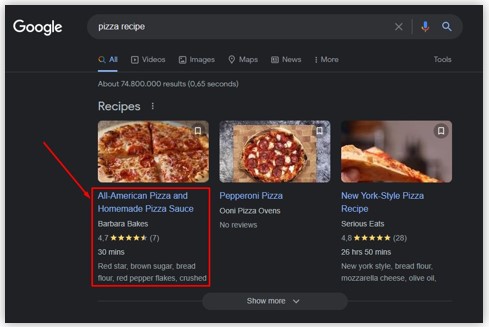If you are unsure whether making a change to your website will affect SEO, running an SEO test might be the solution. This process allows businesses to get better rankings and increase clicks by making changes to the content of the website. This SEO technique involves changes, testing, etc., and is a must-have in the SEO strategy. SEO testing is crucial to stay ahead of competitors and enhance website ranking on the search engine result pages for the users search intent. In this blog, we will describe what SEO testing is, how to run SEO tests, types of SEO tests, and much more.
What is SEO testing?
SEO testing is the process of changing a website’s content or structure and measuring how the changes affect the site’s ranking and organic visibility. It is also a technique for identifying the best techniques for optimizing the pages on the SERP. It allows you to make decisions backed by data; this will make sure that your optimizations are giving positive SEO results. It involves changes in elements like keywords, content, meta tags, HTML headings, and backlinks.
Types of SEO tests
- SEO a/b testing: SEO a/b testing, which is also called split testing, involves altering certain elements, such as web page headlines, while leaving others unchanged for comparison. The group of unaltered pages is called the control group, and the group of altered pages is known as a variant group. These groups of pages should be similar in most aspects but differ in specific elements that might affect search engine rankings. This type of SEO testing is recommended because if the changes negatively affect SEO, it affects only a small subset of pages, and it is not time-consuming as it affects only a small subset of pages. For instance, you might run a/b tests on a group of product pages or blogs and articles with similar structures.
- SEO multivariate testing: SEO multivariate allows you to access multiple variables simultaneously. This test shows audiences variations of different elements on a page for example CTA placement, text placement, headlines images, page layout, etc in order to understand how they affect search rankings and user behaviour or in other words which of them is most engaging to users. It is one of the ways to ensure which combination of elements suits the best for attracting more organic traffic to your page. It might be possible that one headline variant works well with one image but not with another.
- SEO serial testing: It entails making changes to an entire page type across your website and observing the results. For instance, you may test by adding the current year to the title tags on your blog pages. You could roll this out across your entire blog at once and record the SEO results following the change. However, this is not preferred due to certain reasons:
- If the change negatively affects SEO it impacts all your pages not just a few.
- They are more time consuming to make an overall change in site and even more time taking if you have to change it back.
- It is not responsible for variables outside of your control.
- SEO time based testing: This type of testing happens when you make changes to a group of pages and permit a specific period of time to pass before analyzing the impact. With this type of testing, you do not have to divide pages into control and variant groups.SEO testing has three types of time-based tests for different scenarios that are single URL or query tests, group tests, and URL switch tests.
Why should you run SEO tests ?
- Improved decision making: It helps improve decision-making as it is based on new ideas and strategies. Also, its outcome can be assessed before implementation.
- Improved user experience: Enhanced user experience is an important part of SEO, as a good page experience keeps users engaged on your website, and they keep visiting the site again and again.SEO testing includes UX elements, which can influence search engine rankings and organic traffic.
- Improved performance: SEO testing helps you perform a proper SEO analysis. It helps you to use the right SEO tools to improve SEO results and website performance. With testing comes better decision-making, and with better decision-making comes better performance. This includes search visibility, rankings, traffic, and other key SEO performance indicators.
- Justifies resource allocation: SEO testing allows you to use resources judiciously by properly analyzing which SEO strategy will work best for your website. Through proper SEO analysis by SEO testing, it is possible to save time, resources, and money in optimizing a website using various elements.
- Observing what works for your website: Changing some elements that work for one website does not mean that it will work for other websites as well. You need to conduct thorough SEO testing to suit the right elements for your website.
Some of the SEO testing examples are:

- Title tags: Meta titles form an important part as users see them first on the search engine result page, which also influences clicks. While it’s not a direct ranking factor, Google’s ranking algorithm considers click-through rates when evaluating the quality of organic search results. So, better CTR contributes to better website ranking, and meta titles play a significant part here. You can test your meta titles by assessing changes in rankings by:
-
- Adding or removing your brand name;
- Using action words like “buy” or “download”; or
- Changing the character length
- Meta descriptions: Meta descriptions come under meta title and give users clarity on what page covers. These help promote click-through rates and engage users to choose your website ahead of the competitors. You should always focus on writing meta descriptions that are more attractive to increase the customers’ attention. You can run different types of SEO experiments on these meta tags, like adding or deleting:
-
- Star ratings
- Free shipping and
- Using secondary keywords.

- Image alt text: Search engines depend on alt text to understand images and find appropriate results for users. You can split-test whether or not Googlebot changes the ranking position of a page or the image in Google image search based on the changes you make to your alt texts.There are some of the alt text-related SEO experiments that is-
- Using hyphens vs. spacing;
- Adding or removing characters; and
- Switching up the use of keywords.
- Internal links: SEO traffic can be enhanced by adding internal links as they direct users and search engines to the relevant pages of your site. They enhance user behavior metrics like bounce rates, on-site time, and pages per session — all of which are important factors in the quality of a website’s content and enhancing user experience. You can apply a/b tests on internal links to analyze whether changing any of the following will elevate SEO performance:
- A link’s position on the page such as the navigation bar;
- The page being linked to; or Shallow vs. deep links
- Schema markup: Now, you often see a range of rich results on the SERP, be it in the form of starred reviews, recipe ingredients, headlines from news stories, biography of any celebrity, etc. These all are made using schema markup, which is a way of using structured data to show Google what short and crisp information it can pull from the pages to show users in its search results. Thus, you can run SEO experiments to test:
-
- Whether schema markup makes a difference;
- Different structured data types; and
- JSON-LD vs. Microdata code.

- Mobile optimized page: As people use phones frequently to open any website or search for any query, it is important to optimize a web page for mobiles. Pages should be mobile-friendly. This can be done by working on the website’s speed to boost its performance. Instead of depending on desktop versions, Google evaluates quality and relevance based on the mobile version. By using Google AMP, you can create a mobile-optimized website that loads instantly for users..

- Video SEO: An attractive, eye-catching video is crucial in implementing an SEO strategy for both users and search engines. Videos quickly grab user attention and are easy to remember, unlike virtual text presented on search engines. So, making creative videos, optimizing them for users and search engines, putting related keywords, and posting them on websites to gather traffic are the most sought-after ways for marketers to promote their content.
- LSI keywords: LSI keywords mean latent semantic indexing keywords. You should perform thorough keyword research with high search volume. Putting yourself restricted to only primary keywords might not be that profitable, so you should put LSI keywords into content to improve organic traffic. LSI keywords can be found using various keyword tools and should complement your primary keyword and content. To know the impact of these keywords on your current rankings, select a webpage on your website that’s already doing well. Next use some LSI keywords in the content and allow Google some time to re-crawl the page and determine how it affects your rankings.
How to run SEO tests?
- Create a hypothesis: A well-framed hypothesis helps ensure proper SEO results of the experiment. SEO testing is experimenting with different types of elements that involve speculating or predicting the types of SEO techniques that will affect your website’s organic visibility. A hypothesis should be an actual guess and not a random guess. For example, you might hypothesize that increasing the length and depth of content on a page will boost keyword rankings and organic traffic.
- Select the type of test: Each testing method is suited to particular contexts and applications. For example, A/B testing is applicable to single testing changes, and multivariate testing helps in understanding the combined effect of multiple changes at once. If you are testing a prominent change, such as a website redesign, consider a before and after test. Each test type affects the complexity of analysis needed, how easily the results can be the cause of the changes you’ve made, and how the data is collected and understood. Your choice should match your objectives and resources to provide the most accurate and actionable insights.
- Select your pages: It is advisable to run SEO tests on pages that get a reasonable amount of organic traffic. This is because you will not get the actual result from the page that is not getting enough organic traffic. In other words, select pages that represent your site’s broader structure and content. Gather sufficient traffic to allow for clear and reliable conclusions. High-traffic pages provide quicker results due to the volume of data assembled. You can use Google Analytics to find your high-traffic pages.Click reports-engagement-page and screen. Download the results and clean them up when required. These are the pages that you’ll use for your test.
- Determine the test variables: Identify and define the specific elements you plan to change in your test. These variables include meta tags, headings, images, content length, and user interface elements. For instance, if you are testing meta tags, you might change the title and meta description. If you are testing images, you might alter the alt text or file name. If you are testing content length, you might alter the word count. Using a combination of variables to run an SEO test, you can not define that altering which combination of elements will affect your SEO performance.
- Form variations: Create different versions of the page or element you want to test. For instance, if you are testing H1 tags, you might create variations of H1. Or if you are testing the layout of a page, you might create different versions of the page layout. Make sure the variations are different to capture meaningful data.
- Set up the test: Implement the test by using the tools and parameters you need to check the traffic between different variations. This is important for gathering accurate data. Combine the test with your analytics setup. So you can monitor things like ranking, traffic, engagement, and conversions.
- Decide on the test duration: Deciding on the test duration is important as it explains how long your testing variables can be effective. It can vary from a few days to several months.
- Run the test- Run the test long enough for Google to crawl again the pages in your variant group. You can not predict any fluctuations in traffic until the pages have been re-crawled. For running the test, an ample amount of time should be given to get a decent amount of traffic to your pages. Without this, the conclusion would be statistically unimportant. You can always leave the test running for longer if you need more data.
- Collect and analyze data: After collecting a combination of variables, use Google Analytics to compare the performance of the control and variant pages. Focus on metrics that match our initial hypotheses, such as organic traffic, click-through rates, ranking, and engagement rates. Then, you will find out important variations between your test groups and access the changes that can be made in your experiment. Based on your testing of experiments, you can approve or refuse your original hypothesis.
- Apply findings: Now, you can implement changes with proven results. You should apply changes that maintain user experience and fulfill your website’s goals. Do it for your site”s broader context. Search engines constantly need updates, and their algorithms are regularly updating, so make sure that your SEO plans and strategy are according to Google’s updates.
- Decide how to track results: The easiest way through which you can track your SEO result is through an SEO testing tool. It connects you to the Google search console account and brings out results for you. You have to compare average differences in traffic to both groups for the period before and after the changes were made.
Best practises for SEO testing
- Make clear objectives: Well-defined objectives set benchmarks to measure success. Objectives should be specific, measurable, achievable, relevant, and time-based.
- Record everything: Record everything about your SEO tests including hypothesis, variables and findings. To maintain continuity in your optimization process, track progress over time. By recording tests, you can constantly work on updates and make changes to your future decisions.
- Ensure statistical importance: Make sure that the sample or variables that you have taken are not from any random choice or natural fluctuations but are from the changes you have done.
- Focus on one variable at a time: Focus on one variable at a time instead of multiple factors.
For example, try changing just blog titles or meta descriptions, not both. It clarifies the analysis and supports more accurate conclusions, which can help you implement the right step for an SEO strategy, one step at a time.
Conclusion
Thus, we conclude that SEO is a never-ending process, and experimenting with different variations of variables might work for one website and not for another. So, we should never stop SEO testing for our website while formulating an SEO plan and strategy, as Google’s algorithm is constantly improving from time to time. Further, you should keep testing different SEO techniques, tools, and tips for further clarity, the right analysis, and improved decision-making in SEO testing.
References:
-
306, 2024Understanding Google’s preference for crawling high-quality content
Crawling websites is [...]
-
2905, 2024All you should know about third-party cookies by Google
Cookies have revolutionized [...]
-
2405, 2024Helpful content update by Google to enhance website ranking
Google launched a [...]





Leave A Comment